Vitamin D is a fat-soluble vitamin essential for human health. It is unique because it can be synthesized in the skin through exposure to ultraviolet B light and obtained through diet and supplements.1 Beyond its well-known role in bone health, vitamin D influences myriad biological processes, including immune function, cell growth regulation, and inflammation modulation.2,3
The importance of vitamin D for human health has been recognized for decades, with ongoing research exploring its involvement in musculoskeletal health,4 endocrine functions,5 mental health,6 and cancer.7 Although prior studies have shown a growing interest in vitamin D research,8 no comprehensive analysis to date has examined the recent decline in the number of new publications on this topic. To address this gap, this study examined 40 years of vitamin D research to assess publication trends, shifting focus, and public health implications.
We performed a PubMed literature search to analyze vitamin D-related publications from 1985 to 2024. We extracted qualitative and quantitative data to classify articles by publication type (ie, randomized controlled trials, review articles, and total publications on vitamin D) and by conditions associated with vitamin D (ie, osteoporosis, hyperparathyroidism, vitamin D deficiency, and hypervitaminosis). Additionally, we examined National Institutes of Health (NIH) funding using the NIH Reporter to identify patterns in government funding for vitamin D-related studies. Funding data included contributions from NIH, Centers for Disease Control and Prevention, Food and Drug Administration, Agency for Healthcare Research and Quality, and Administration for Children and Families. The Penn State College of Medicine Institutional Review Board deemed this study exempt from review and approval under Study ID STUDY00025684.
To investigate shifts in vitamin D research, the annual data were graphically represented in Google Sheets (Google LLC). Statistical analyses were performed using SPSS version 24 (IBM), RStudio (Posit Software), and JMP Pro 17 (JMP Statistical Discovery LLC). Significance was assessed with negative binomial regression (P<.05), with “year” and “NIH funding” as predictors. A four-phase negative binomial regression was used to evaluate publication trends by decade.
The number of vitamin D-related publications increased by 43.4% from 894 in 1985 to 1,282 in 2000. This growth continued, rising 88.7% from 2,263 in 2008 to 4,271 in 2012. Publications peaked at 6,019 in 2021, followed by a 16.8% decline to 5,008 in 2023, and further dropped to 4,896 by the end of 2024, marking an overall 18.7% decrease from the 2021 peak (Figure 1). This downward trend was consistent across publications on vitamin D-associated conditions (Figure 2).
NIH funding for vitamin D research peaked at $52.4 million in 2013 but decreased to $10.5 million by 2024 (Figure 3). Regression analysis revealed that “year” was consistently a significant predictor across all models (P<.05), whereas “NIH funding” significantly predicted overall vitamin D publication volume (P<.05) but had no significant association with hypervitaminosis-focused research (P>.05; Table 1).
Four-phase negative binomial regression analysis revealed that vitamin D publication rates increased significantly over the first 3 decades, with annual increases of 1.44% (P=.002) from 1985 to 1994, 4.78% (P<.001) from 1995 to 2004, and 12.88% (P<.001) from 2005 to 2014. In contrast, from 2015 to 2024, the annual increase dropped to 0.63% (P=.389), indicating a decline in publication activity. This trend can be visualized further in Figure 4.
Vitamin D is essential for maintaining health and preventing diseases,9 including cardiovascular disease,10 atherosclerosis,11 diabetes,12 obesity,13 depression and seasonal affective disorder,14,15 Alzheimer’s disease,16 and osteoporosis.17 This study analyzed vitamin D research from 1985 to 2024, showing an annual growth in Vitamin D research since 1985, a peak in 2021, and a decline thereafter, indicating a shift in research priorities. Importantly, NIH funding significantly predicted overall vitamin D publication volume but had no significant association with hypervitaminosis-focused research; this finding highlights funding impact on the broader field rather than this specific area, indicating its limited effect on publication trends related to vitamin D.
Although pinpointing a single cause for the post‐2021 dip in total vitamin D publications is challenging, several factors might have contributed to this trend. Notably, media wields significant influence over public health and research by determining which topics receive attention and how they’re presented, thereby shaping both debate and public perception.18 In 2014, studies reported a marked increase in vitamin D coverage across newspapers,19 television hosts, and other media outlets, a surge that likely drove its widespread popularity—which is evident in rising rates of testing and supplement use despite limited, evidence-based guidelines.20-22
When COVID-19 emerged, media attention and public interest likely shifted to pandemic-related health concerns, contributing to a subsequent decline in vitamin D discourse. The COVID-19 pandemic also was noted to disrupt research work and redirect scientific focus away from basic science and clinical research.23
The decline also may suggest research saturation; however many questions about vitamin D’s mechanisms, optimal levels, and health effects remain unanswered. Mendez and colleagues reported Vitamin D deficiency to be a growing global health concern in 2020.24 Prior research has demonstrated that among middle-aged and older adults in the United States, roughly one-fifth are vitamin D deficient, a risk correlated with increased mortality.25
Despite extensive research, significant gaps26 remain in our understanding of vitamin D, including—but not limited to—its optimal levels and dosages, testing strategies, and clinical applications.27 Emerging extraskeletal research on vitamin D’s role in the gut microbiome and cardiovascular disease highlights ongoing uncertainties and the evolving nature of the field.28 A 2024 systematic review highlighted the need for large-scale, multiethnic studies to uncover genetic variations in vitamin D pathways, crucial for understanding its role in autoimmune diseases and personalized treatment.29 Further investigation is warranted, as much remains unknown. Thus, a shift back toward increasing vitamin D research is required, and future research should focus on trends in serum 25-hydroxyvitamin D testing,30 vitamin D supplement use,31 genetic analysis,26 nonskeletal outcomes,32 and the prevalence of both vitamin D deficiency and hypervitaminosis D.33
Limitations of this study included the reliance on PubMed, which may miss relevant publications in nonindexed journals. In addition, the analysis of funding via the NIH Reporter provided insight into government support but overlooks private and international funding sources. Acknowledging the significant increase in the total number of publications is important due to the emergence of new journals and faster publication processes over the past 5 decades. Ghasemi et al reported a linear growth in the number of papers and journals over the last 2 decades.34 The analysis in this paper did not account for the differential comparison to this overall rate of expansion in publications.
Despite its limitations, this study is the first to map 4 decades of vitamin D research, highlighting important questions that still need to be explored. Given the global prevalence of vitamin D deficiency and its broad health implications, strategic efforts—including interdisciplinary collaboration, long-term studies, and supportive policies—are essential to reinvigorate research and inform public health priorities.

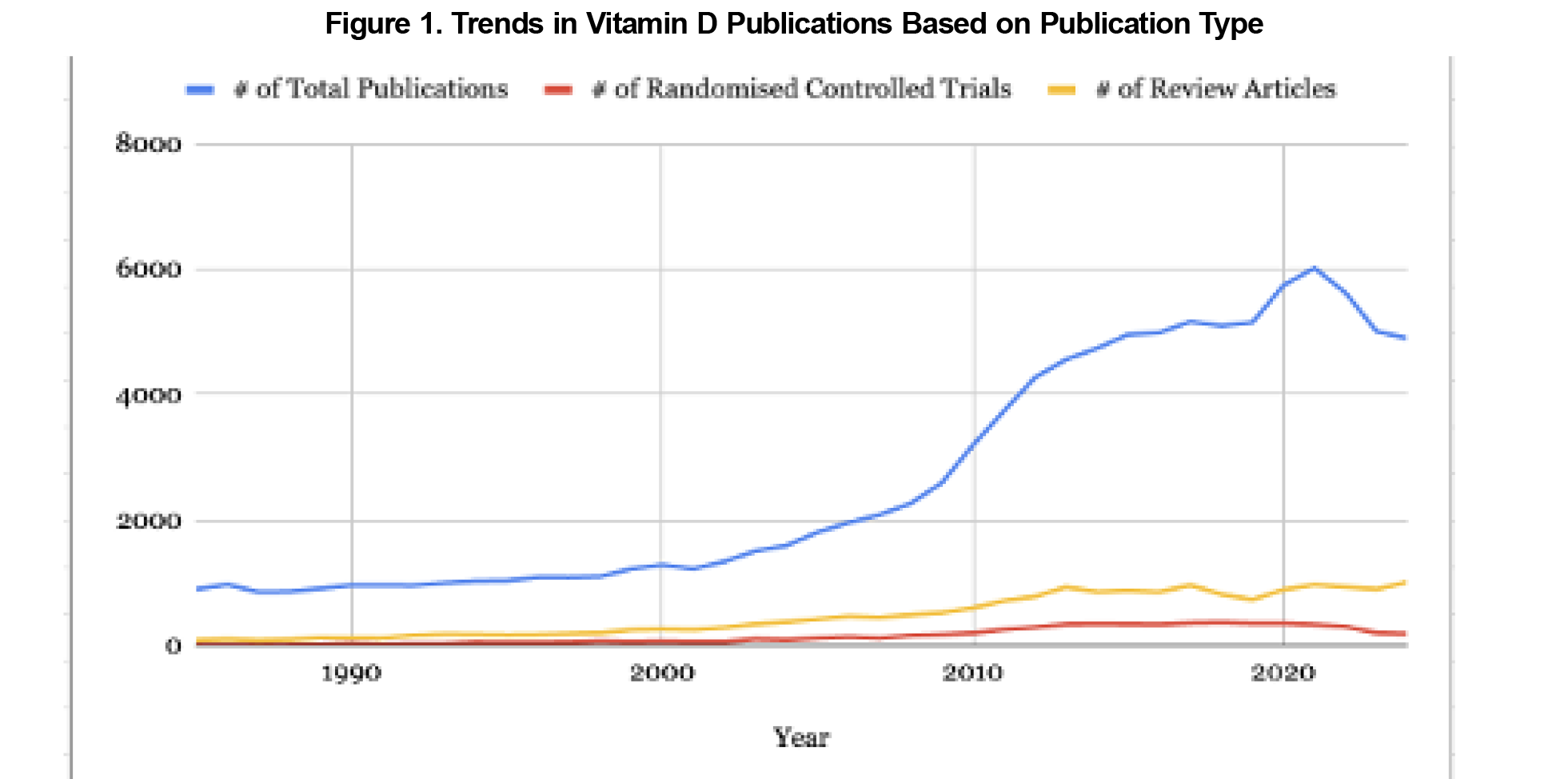
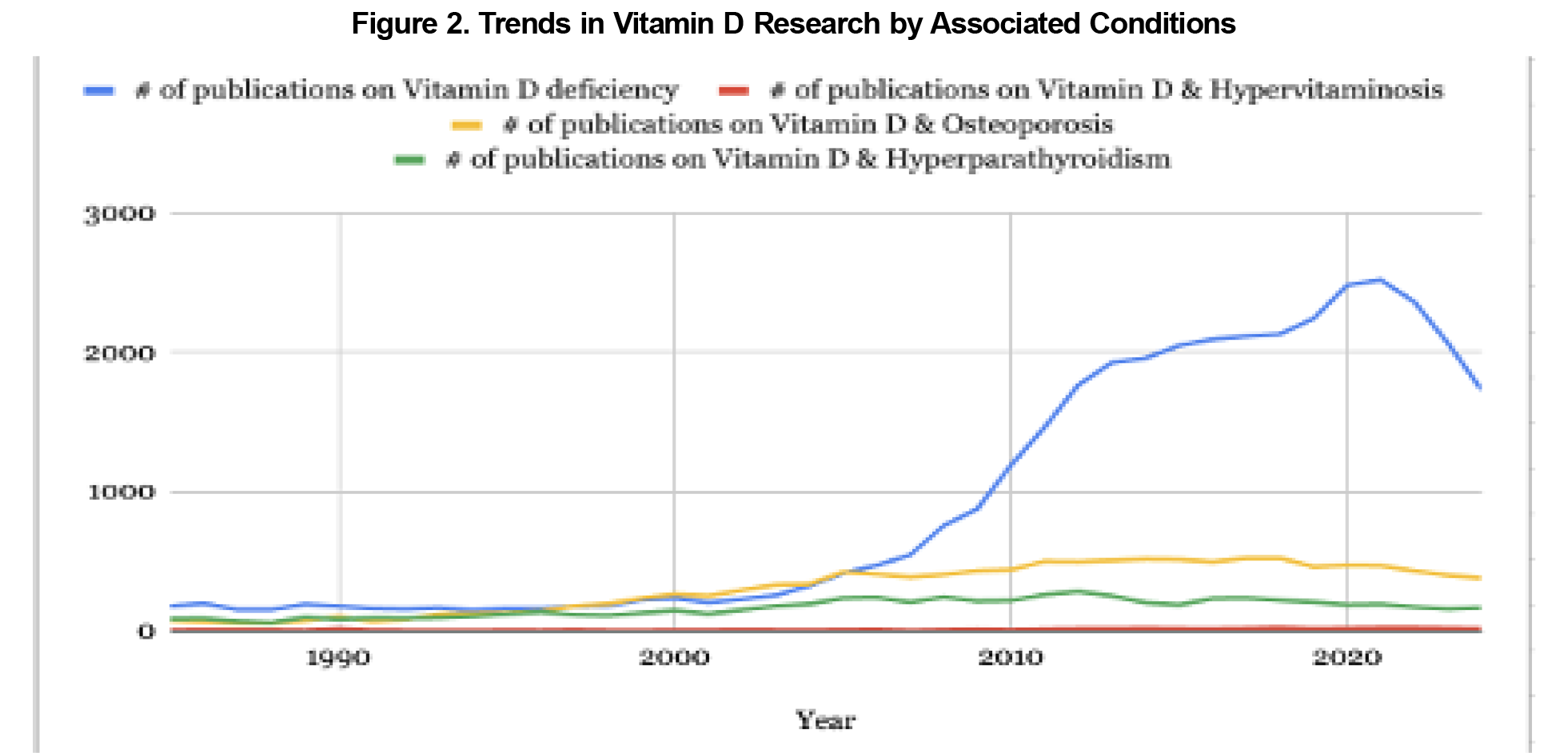
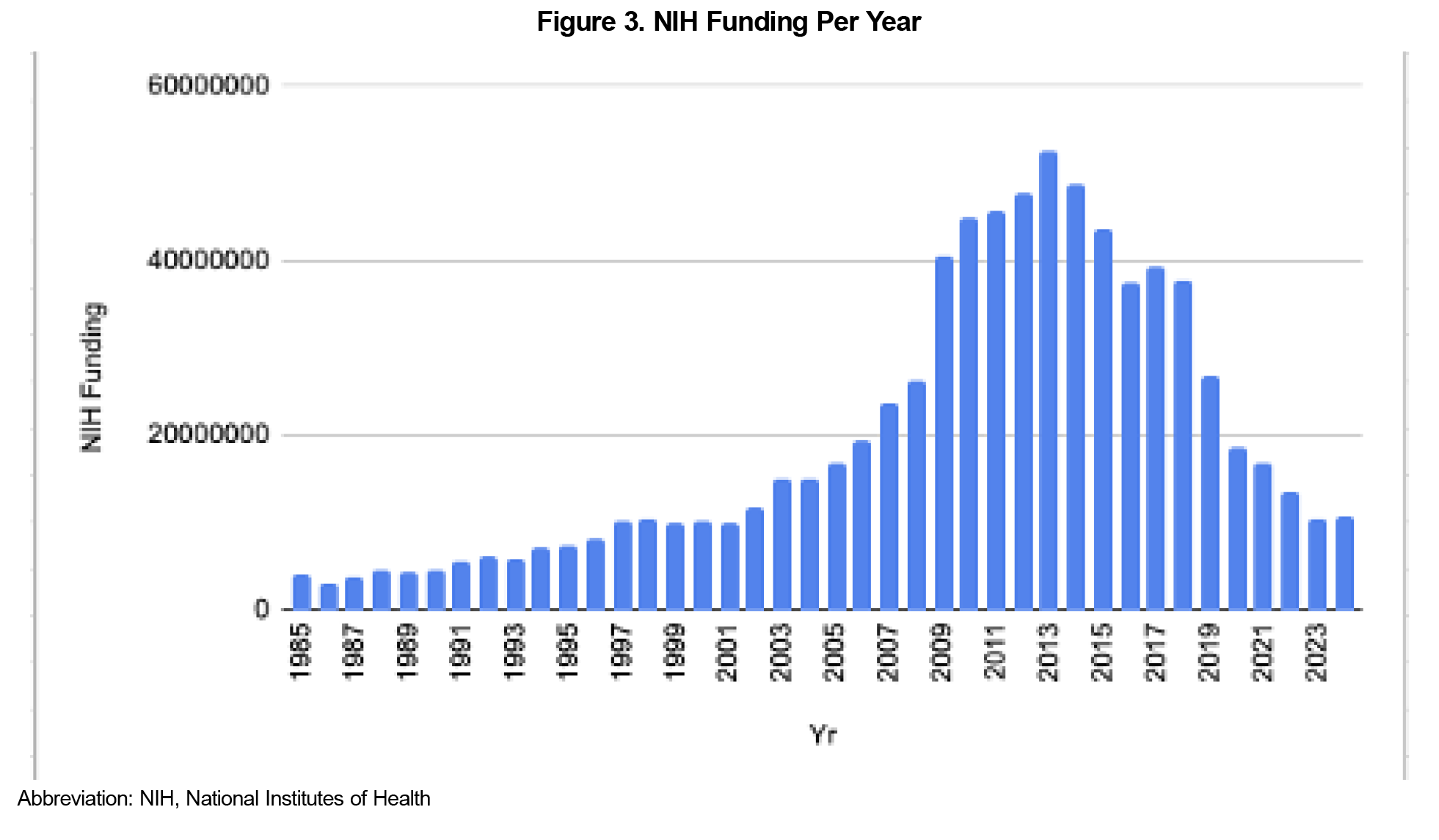
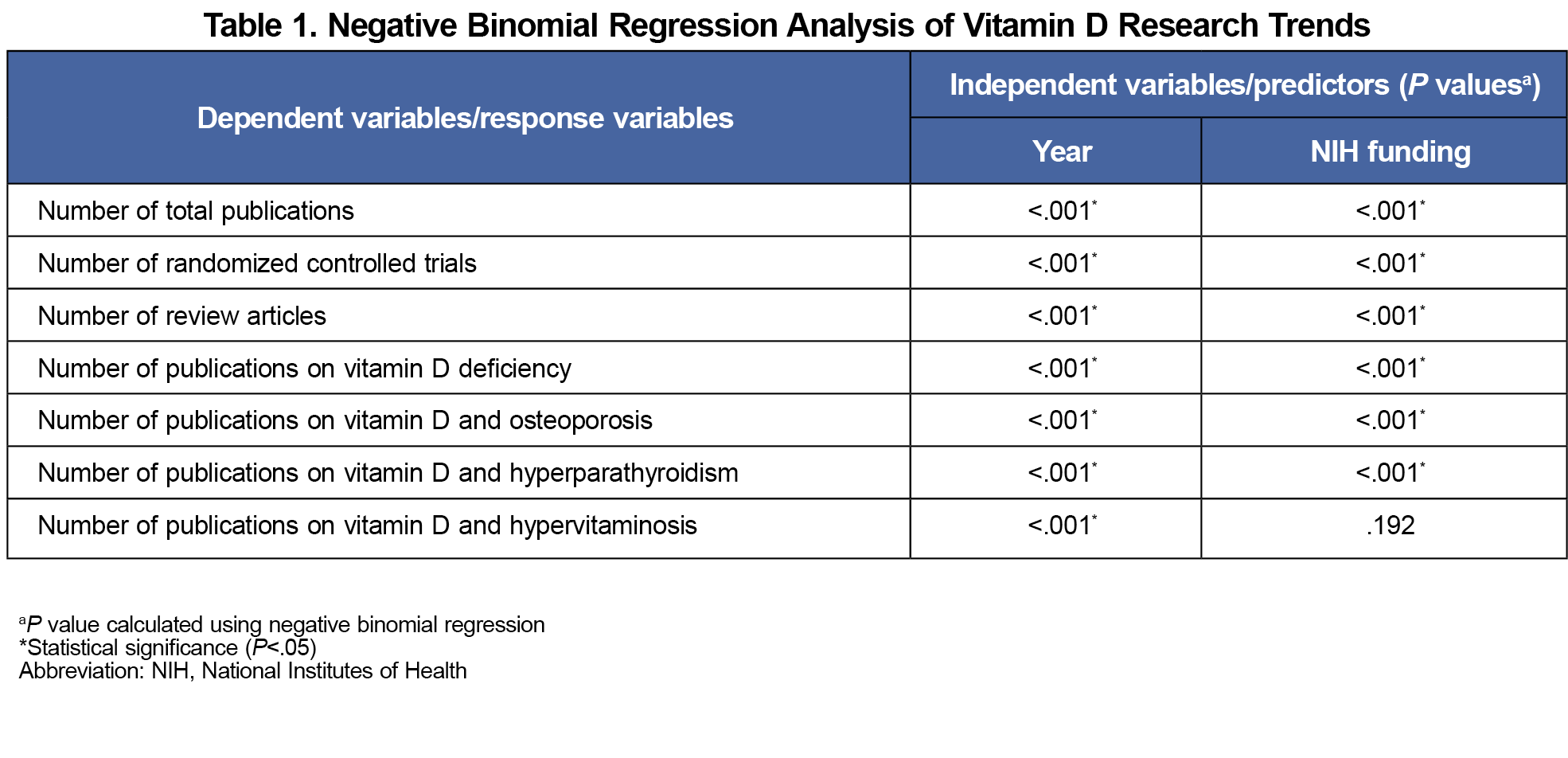
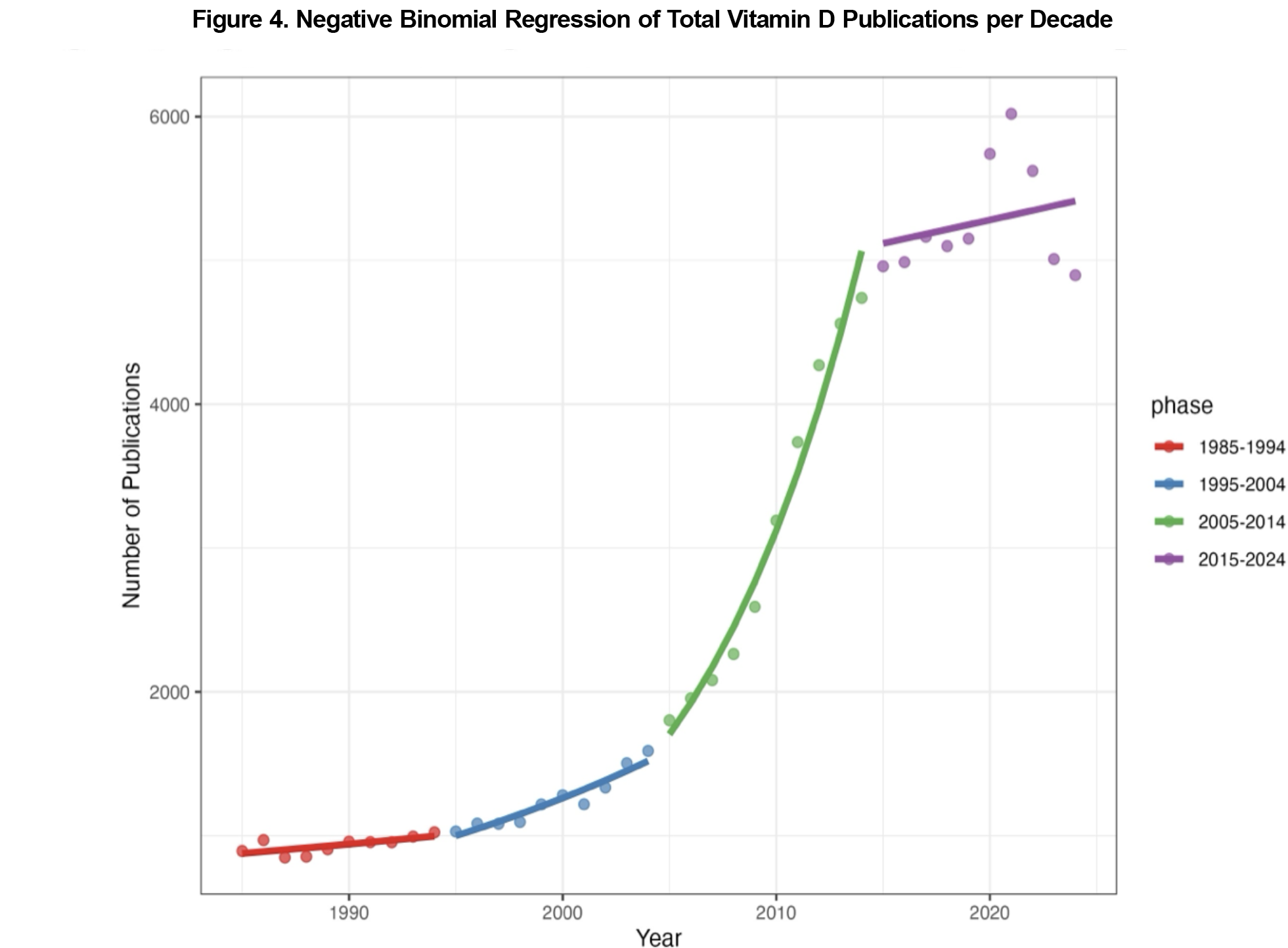


There are no comments for this article.